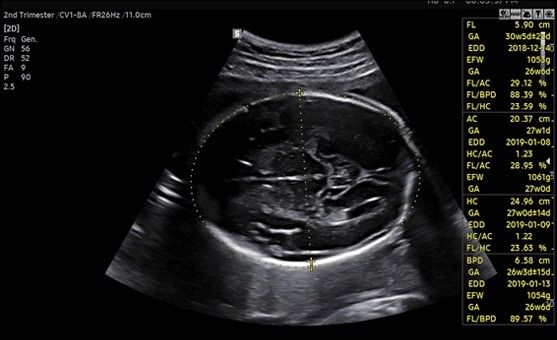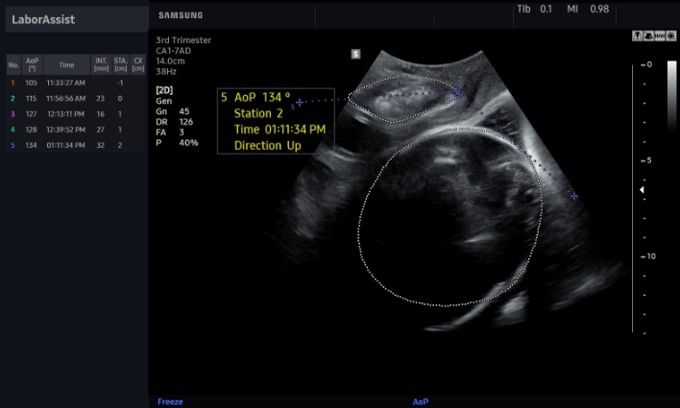Samsung-Intel AI Partnership Behind Fetal Ultrasound Smart Workflow
Ultrasound system provides obstetric measurements during labor in seconds, eliminating the need for digital vaginal exams and helping to side-step C-sections.
Together with Intel AI, Samsung Medison announced a new fetal ultrasound smart workflow this week that is designed to improve maternal and fetal health and safety by improving obstetric measurements.
According to research from the Perinatal Institute, accurate fetal growth tracking is essential to good prenatal care and outcomes. Head and abdominal circumference measurements are excellent indicators of proper fetal growth, but shadows from the placenta can impede accurate assessments. Being able to recognize growth restrictions is an effective way for physicians to prevent still birth.
Courtesy: Samsung Medison

Together, Samsung Medison’s BiometryAssist™ and LaborAssit™, powered by an Intel® Core i3 processor, Intel® Distribution of OpenVINO™ toolkit, and OpenCV toolkit, are designed to help providers gather those more accurate measurements. BiometryAssist™ automates and simplifies fetal measurements, and LaborAssist™ automatically estimates the fetal angle of progression during labor. This performance largely eliminates the need for invasive digital vaginal exams which can cause infection, company officials said.
“Samsung Medison’s BiometryAssist™ is a semi-automated fetal biometry measurement system that automatically locates the region of interest and places a caliper for fetal biometry, demonstrating a success rate of 97 percent-to-99 percent for each parameter,” said Jayoung Kwon, M.D., Ph.D., professor of maternal fetal medicine at Yonsei Universtiy College of Medicine. “Such high efficacy enables its use in the current clinical practice with high precision.”
Courtesy: Samsung Medison

Specifically, according to a company statement, BiometryAssist™ automates and standardizes fetal measurements to 97-percent accuracy with one click in roughly 85 milliseconds. In doing so, it allows physicians to quickly verify consistent measurements. And, during labor, LaborAssist™ estimates fetal angle of progression and head direction in an average of 1.5 seconds to within 8 degrees and 95-percent confidence, giving the physician a better idea of the fetal descent to plan for the best delivery method for the individual patient, potentially avoiding a C-section.
The solutions received Class 2 clearance from the U.S. Food & Drug Administration this year.
What is the Best Use of AI in CT Lung Cancer Screening?
April 18th 2025In comparison to radiologist assessment, the use of AI to pre-screen patients with low-dose CT lung cancer screening provided a 12 percent reduction in mean interpretation time with a slight increase in specificity and a slight decrease in the recall rate, according to new research.
Can CT-Based AI Radiomics Enhance Prediction of Recurrence-Free Survival for Non-Metastatic ccRCC?
April 14th 2025In comparison to a model based on clinicopathological risk factors, a CT radiomics-based machine learning model offered greater than a 10 percent higher AUC for predicting five-year recurrence-free survival in patients with non-metastatic clear cell renal cell carcinoma (ccRCC).